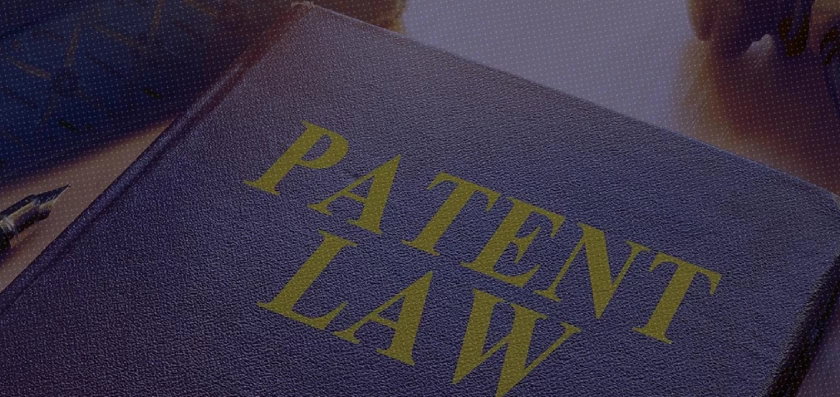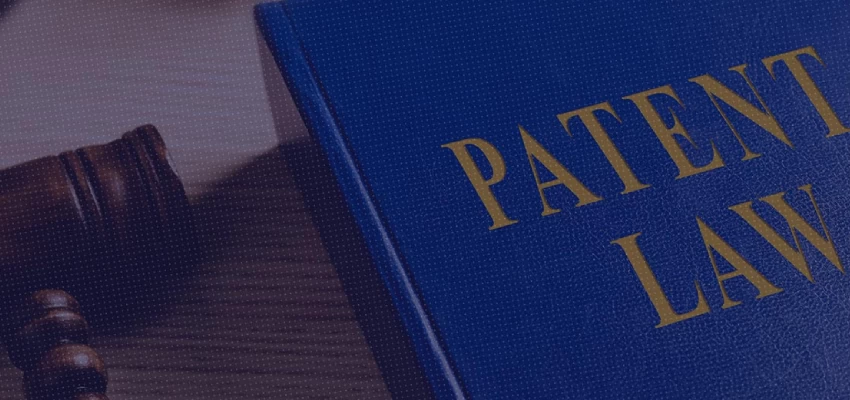Introduction
This article discusses the judgment[1] passed by the Hon’ble High Court of Bombay on a petition filed by Sonalkumar Sureshrao Salunkhe and Kunal Sureshrao Salunkhe (‘Petitioner(s)’) against an impugned order passed by the Assistant Controller of Patents and Designs (‘Respondent’) on 16 September 2021, refusing the grant of the Petitioner(s)’ patent application under Section 21(1)[2] of the Patents Act, 1970. The petition was an appeal under the provisions of Section 117A[3] of the Patents Act, 1970 (‘Patents Act’) challenging the order passed by the Respondent.
In said order, the Respondent refused to proceed with the grant of the patent application due to non-compliance with all the objections raised in the First Examination Report (FER) in due time, as per the provisions of Section 21(1) of the Patents Act read with Rule 24-B(5)[4] of the Patents Rules. The Respondent argued that since the order was passed under Section 21(1) of the Patents Act, the present petition was not maintainable, as per the provisions of Section 117A of the Patents Act.
On the other hand, in said petition, the Petitioner(s) argued that all the requirements under the FER were responded to in due time, as per the provisions of Section 21(1) of the Patents Act read with Rule 24-B(5) of the Patents Rules. The Petitioner(s) further argued that since all the requirements under the FER were complied with, the Petitioner(s) did not have any intention to abandon the patent application. Accordingly, based on the grounds taken in said petition, the Petitioner(s) argued that the Respondent had erred in passing the order under Section 21(1) of the Patents Act which should have ordinarily and correctly been passed under Section 15[5] of the Patents Act, since the Respondent did not find the response to the FER satisfactory. Therefore, the order is appealable under Section 117A of the Patents Act.
A closer examination of Section 21(1) and Section 15 of the Act reveals potential confusion in the applicability of the two provisions. The provision under Section 21(1) requires the Applicant to comply with the objections raised by the Controller in the first statement of objections within the prescribed period of time, failing which the patent application is deemed to have been abandoned. The assumption that is made is that the non-compliance with Section 21(1) is indicative of the Applicant’s disinterest in pursuing the patent application. On the other hand, the provisions under Section 15 dictate that if the Controller is satisfied that the patent application is in conformance with the requirements of the Act then the Controller can proceed to grant the patent application. Otherwise, the Controller can refuse the patent application, after providing a chance to the Applicant to amend the patent application as per the requirements of the Act. If the Applicant addresses only some of the Controller's objections while leaving others unaddressed, this constitutes insufficient compliance. Therefore, the question is whether to treat this insufficient compliance as non-compliance to the cited objections and analyze this matter in the context of Section 21(1) or treat this insufficient compliance as unsatisfactory response by the Applicant and analyze such unsatisfactory response in the context of Section 15. Further, as per the provisions of Section 117A of the Act, the Applicant can appeal against a refusal order passed under Section 15 in the Hon’ble High Court, however, the Applicant cannot appeal against the refusal order passed under Section 21(1) in the Hon’ble High Court.
The Hon’ble High Court, after considering the facts of the case, decided that the Petitioner(s), while responding to the FER, dealt with only one of the objections in the FER and did not deal with the other objections and, therefore, did not comply with the requirements under Section 21(1) of the Patents Act. Therefore, the order of the Respondent was indeed an order under Section 21(1) of the Patents Act and not under Section 15 of the Patents Act which made the petition non-maintainable under Section 117A of the Patents Act. In view of the above, the petition was dismissed. This article analyzes the assessment of the Hon’ble High Court of the order issued by the Controller under Section 21(1) of the Patents Act and whether the order was correctly issued under Section 21(1).
Facts of the case
The Petitioner(s) filed an ordinary patent application, i.e., an application first filed directly at the Indian patent office, on 17th January 2015, titled A SYSTEM FOR PREPARING SEED BED AND/OR FURROWS bearing application number 174/MUM/2015. The FER for the patent application was issued to the Petitioner(s) on 24 June 2019 and a response to the FER (RTFER) was filed by the Petitioner(s) on 24 December 2019. In the FER, the Controller raised objections under Section 2(1)(ja) (Inventive Step) and other objections under the headings Sufficiency of Disclosure, Definitiveness, Others Requirements, and Formal Requirements, few of which necessitated either cogent argumentation or appropriate amendments to the claims. However, in the RTFER, the Petitioner(s) responded to only the objection related to Inventive Step arguing that the cited documents were not relevant and claims 1-7 were novel and inventive. It is of note that no technical analysis of either the claimed subject matter or of the cited prior art references was provided. Instead, a statement dismissing the references as irrelevant was made by the Applicant while submitting the RTFER. Further, in the RTFER, the Petitioner(s) has also requested the Controller for a hearing under Section 14[6] so as to discuss and explain the features of the present invention. For the outstanding objections, the Petitioner(s) responded by simply saying that the Petitioner(s) would comply with the other objections in due course. After filing the RTFER, the Petitioner(s) filed a Form-30 on 15 September 2020 as a follow up after filing the RTFER in which, the Petitioner(s) informed the Controller that the RTFER had been filed and further instructions from the Controller were being awaited. The Petitioner(s), in said Form-30, again requested the Controller to issue a hearing notice in case any formal or technical requirements were to be met.
On 3 August 2021, the Respondent issued a hearing notice to the Petitioner(s) where the Respondent raised an objection that in the RTFER the Petitioner(s) merely argued that the claimed invention is novel and inventive and did not comply with other objections raised in the FER. Accordingly, the Respondent objected that the RTFER could not be taken on record due to non-compliance with the objections raised in the FER, as per Section 21(1) of the Patents Act read with Rule 24-B(5) of the Patents Rules.
The hearing was held on 20 August 2021, and, during the hearing, the Petitioner(s) challenged the contention of the Respondent. In response to the objections raised in the hearing notice the Petitioner(s) argued that the applicant has every right to file any document(s) at any stage during the course of proceedings before the disposal or grant of the application. The Petitioner(s) further argued that any document filed at the IPO during the course of the proceedings of the patent application has to be taken on record and processed accordingly. The Petitioner(s) further submitted that the Form-30 dated 15 September 2020 was also filed to the IPO after the filing of the RTFER to establish that the Petitioner(s) interests in keeping the patent application alive. The Petitioner(s) cited an opinion of a former Controller General of Patents, Designs and Trademarks regarding Section 21(1) of the Patents Act, who had once opined that no patent application can be deemed to have been abandoned under Section 21(1) if the Applicant has shown interest and addressed any objection in the FER, for instance, even merely complied with Section 8 requirement by submitting a Form 3. In other words, the Petitioner(s) had contended that even if a single piece of paper has been filed after issuance of FER, the patent application cannot be processed and abandoned under Section 21. In such a case, the patent application is required to be processed under Section 15 of the Patents Act along with supporting rules.
The Respondent went on to refuse the patent application on the basis of Section 21(1) of the Patents Act, read with Rule 24-B(5), (6), while dismissing the contentions raised by the Petitioner(s). Therefore, the patent application was deemed to have been abandoned. Aggrieved by the order of the Respondent, the Petitioner approached the Bombay High Court by way of the petition.
In response to the petition filed with the Hon’ble High Court by the Petitioner(s), the Respondent had raised a preliminary objection that the present petition was not maintainable owing to the fact that the provisions of Section 117A of the Patents Act did not provide for an appeal against an order passed under Section 21(1) of the Patents Act. In response to this preliminary objection, the Petitioner(s) submitted that, in the present case, in the RTFER, the Petitioner(s) had responded to all the requirements raised in the FER. The Petitioner(s) further drew the Court's attention to a letter dated 15 September 2020 issued by the Petitioner(s) as a follow-up to the reply dated 24 December 2019 in which the Petitioner had informed the Controller that the RTFER had been filed and further inputs from the Controller were awaited. The Petitioner(s) contended that since the requirements in the FER were complied with, the patent application could not be deemed to have been abandoned as per Section 21(1) of the Patents Act. The Petitioner(s) further submitted that, if the Respondent found that the Application ought to have been rejected owing to the unsatisfactory response of the Petitioner(s), then the order rejecting the application would be tantamount to an order passed under Section 15 of the Patents Act, which is appealable under Section 117A. The Petitioner(s), thus, submitted that the present petition was maintainable. In support of the submissions, the Petitioner(s) relied upon the judgements of the Delhi Hon’ble High Court in Merck Serono S.A. v. Union of India, Telefonaktiebolaget LM Ericsson (PUBL) v. Union of India (UOI) and Ors. and Ferid Allani v. Union of India (UOI) and Ors. Based on the cited judgments the Petitioner(s) argued that responding to the objections raised as a result of examination of the patent application and whether the objections had been satisfactorily responded to were two different matters. Thus, as per the provisions of Section 21(1) the patent application is deemed to have been abandoned if the Applicant had failed to comply with all the objections. On the other hand, according to the provisions of Section 15 the patent application is refused if the Applicant had failed to satisfactorily comply with all the objections.
Discussion and decision
The Hon’ble High Court pointed out that the FER issued to the Petitioner(s) made detailed observations on the requirements under the Patents Act in respect of (i) Inventive Step (ii) Sufficiency of Disclosure (iii) Definitiveness and (iv) other requirements. The reply dated 24 December 2019 of the Petitioner(s), however, did not comply with all the requirements. An examination of the reply to the FER revealed that, apart from some remarks on the inventive step requirement, the Petitioner(s) did not address any other requirements of the FER. In this factual scenario, it would have to be considered whether Section 21(1) is applicable and whether, accordingly, an order rejecting the application is passed under Section 21(1) or under Section 15. The Hon’ble High Court highlighted the fact that not only did the Petitioner(s) not respond to the majority of the objections raised in the FER, in the given situation, the Petitioner(s) also did not seek an extension of time for complying with the requirements of the FER which was available to them. In such circumstances, after considering the written submissions of the Petitioner(s) and after issuing a hearing, the impugned order was correct in holding that the patent application was deemed to have been abandoned in that it has failed to comply with the requirements of Section 21(1).
In passing its order, the Hon’ble High Court referred to the judgments of the Delhi High Court in Telefonaktiebolaget LM Ericsson (PUBL) v. Union of India (UOI), Ferid Allani v. Union of India (UOI) and Merck Serono S.A. v. Union of India (UOI). Based on these judgments, the Hon'ble High Court emphasized two distinct points: first, the Applicant must respond to all objections raised in the FER; second, the quality of those responses is a separate consideration. The patent application would be deemed to have been abandoned when the Applicant fails to comply with all the requirements imposed on him under this Act. However, if the Applicant has replied to the objections but the reply is found to be unsatisfactory by the Controller, even after a further opportunity if any is given, then the Controller must proceed to take a decision under Section 15, after complying with Section 14 of the Act. After considering the arguments presented by both the Respondent and the Petitioner(s) the Hon’ble High Court held that the Petitioner(s) complied with only one of the objections and did not comply with the rest of the objections raised in the FER. As a result of the non-compliance, the impugned order held that the patent application shall be deemed to have been abandoned and that no further technical examination was required as the Applicant had failed to discharge its due responsibility. In view of these facts, the Hon’ble High Court concluded that the impugned order is an Order under Section 21(1) of the Patents Act and not under Section 15 of the Patents Act. Given this, Section 117A of the Patents Act would not apply and the petition was dismissed.
Conclusion:
The order of the Hon’ble High Court has brought the interpretation of Section 21(1) of the Patents Act under the microscope. As per the order, in response to the FER issued for the patent application the Petitioner(s) did not comply with all the objections raised in the FER and, instead, only complied with one of the objections while committing to comply with the outstanding objections in due course. However, the Petitioner(s) never did comply with the rest of the objections. In view of this, the Controller issued a hearing notice informing the Applicant that the patent application was deemed to be abandoned under Section 21(1). Issuance of a hearing notice for a patent application which was deemed abandoned begs the question of whether a hearing was required to be afforded to the Applicant if the patent application was deemed abandoned. This chain of events seemingly leads to a fresh interpretation of Section 21(1) taken by the Patent Office and corroborated by the Hon’ble High Court that even if the requirement of Section 21(1) is not met, owing to which the application is deemed to have been abandoned, the Applicant is still afforded an opportunity to be heard for an otherwise abandoned application. In other words, the deemed fiction created by Section 21(1) is brought subject to a hearing opportunity in which the Applicant is allowed to make a case for an application which should have ceased to be active as soon as the compliance with Section 21(1) was not done.
As a result of this interpretation of Section 21(1) the Applicants may seek an opportunity to be heard even in cases where no response to the FER was submitted at all and, by way of this, the Applicants may seek to re-initiate prosecution of patent applications which are already deemed abandoned under Section 21(1). Therefore, the current order of the Hon’ble High Court of Bombay is likely to effectively trigger a debate on the interpretation of Section 21(1).
[The authors are Senior Associate and Partner, respectively, in IPR practice at Lakshmikumaran & Sridharan Attorneys]
- [1] Judgement dated 6 May 2024 in Commercial Miscellaneous Petition No. 8 of 2022
- [2] Section 21(1): Time for putting application in order for grant:
An application for a patent shall be deemed to have been abandoned unless, within such period as may be prescribed, the applicant has complied with all the requirements imposed on him by or under this Act, whether in connection with the complete specification or otherwise in relation to the application from the date on which the first statement of objections to the application or complete specification or other documents related thereto is forwarded to the applicant by the Controller.
Explanation.-Where the application for a patent or any specification or, in the case of a convention application or an application filed under the Patent Cooperation Treaty designating India any document filed as part of the application has been returned to the applicant by the Controller in the course of the proceedings, the applicant shall not be deemed to have complied with such requirements unless and until he has re-filed it or the applicant proves to the satisfaction of the Controller that for the reasons beyond his control such document could not be re-filed.
- [3] Section 117A: Appeals to Appellate Board:
- Save as otherwise expressly provided in sub-section (2), no appeal shall lie from any decision, order or direction made or issued under this Act by the Central Government, or from any act or order of the Controller for the purpose of giving effect to any such decision, order or direction.
- An appeal shall lie to the Appellate Board from any decision, order or direction of the Controller or Central Government under section 15, section 16, section 17, section 18, section 19,section 20, sub-section (4) of section 25, section 28, section 51, section 54, section 57, section 60, section 61, section 63, section 66, sub-section (3) of section 69, section 78, sub-sections (1) to (5) of section 84, section 85, section 88, section 91, section 92 and section 94.
- Every appeal under this section shall be in the prescribed form and shall be verified in such manner as may be prescribed and shall be accompanied by a copy of the decision, order or direction appealed against and by such fees as may be prescribed.
- Every appeal shall be made within three months from the date of the decision, order or direction, as the case may be, of the Controller or the Central Government or within such further time as the Appellate Board may, in accordance with the rules made by it allow.
- [4] Rule 24-(B)(5) and (6): Examination of application:
- The time for putting an application in order for grant under section 21 shall be six months from the date on which the first statement of objections is issued to the applicant to comply with the requirements.
- The time for putting an application in order for grant under section 21 as prescribed under sub-rule (5) may be further extended for a period of three months on a request in Form 4 for extension of time along with prescribed fee, made to the Controller before expiry of the period specified under sub-rule (5).
- [5] Section 15: Power of Controller to refuse or require amended applications, etc., in certain case:
Where the Controller is satisfied that the application or any specification or any other document filed in pursuance thereof does not comply with the requirements of this Act or of any rules made thereunder, the Controller may refuse the application or may require the application, specification or the other documents, as the case may be, to be amended to his satisfaction before he proceeds with the application and refuse the application on failure to do so.
- [6] Section 14: Consideration of the report of examiner by Controller:
Where, in respect of an application for a patent, the report of the examiner received by the Controller is adverse to the applicant or requires any amendment of the application, the specification or other documents to ensure compliance with the provisions of this Act or of the rules made thereunder, the Controller, before proceeding to dispose of the application in accordance with the provisions hereinafter appearing, shall communicate as expeditiously as possible the gist of the objections to the applicant and shall, if so required by the applicant within the prescribed period, give him an opportunity of being heard.











